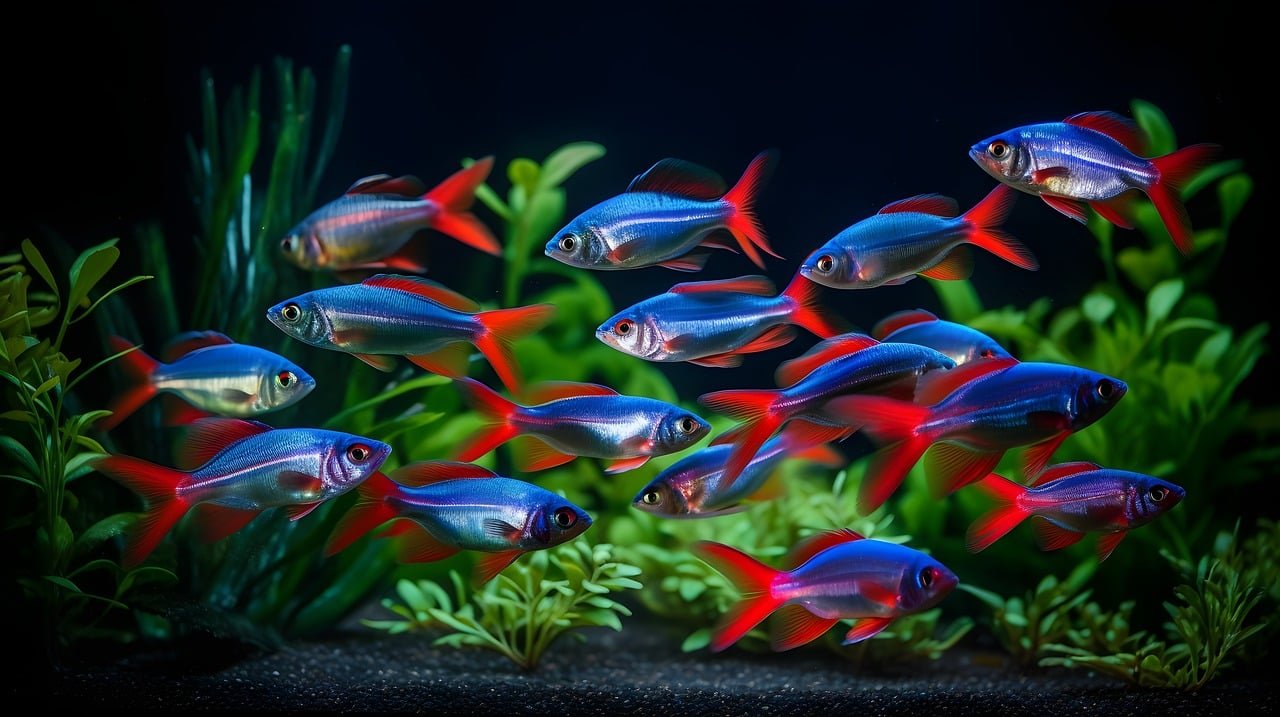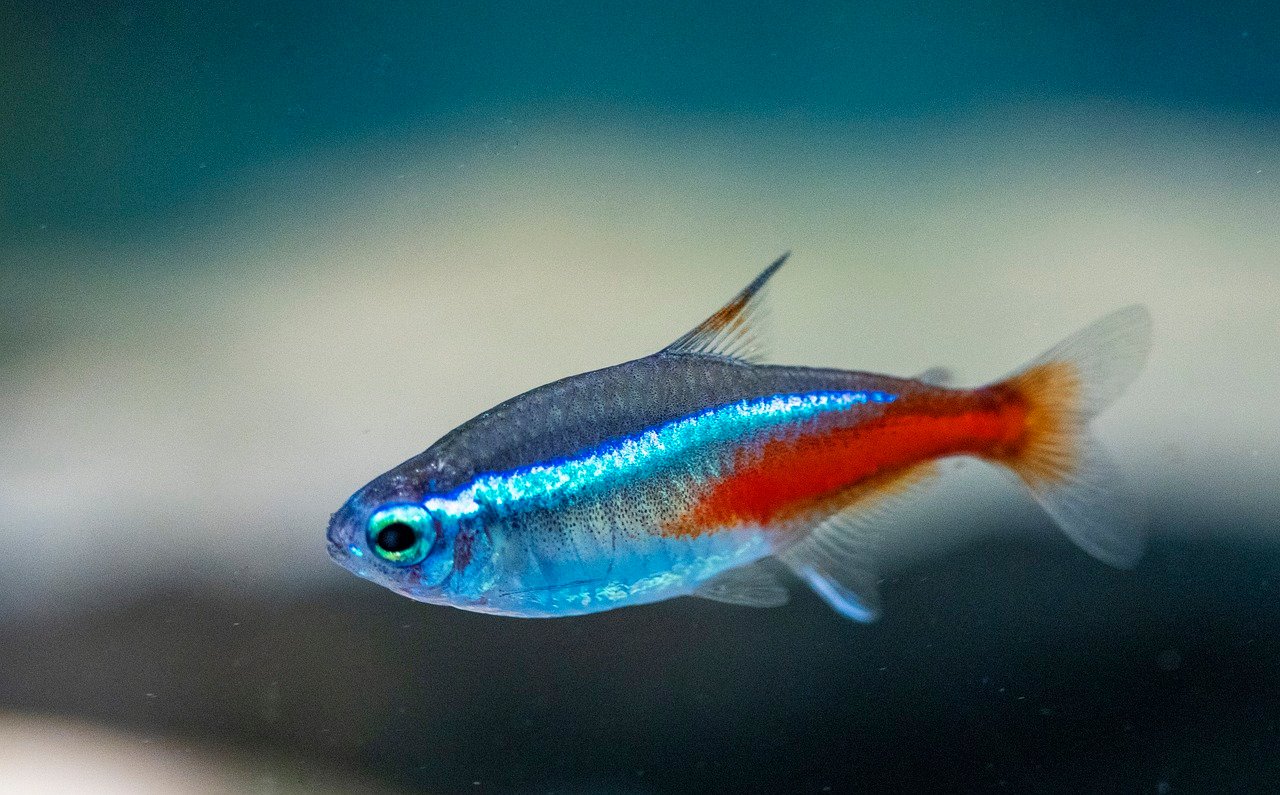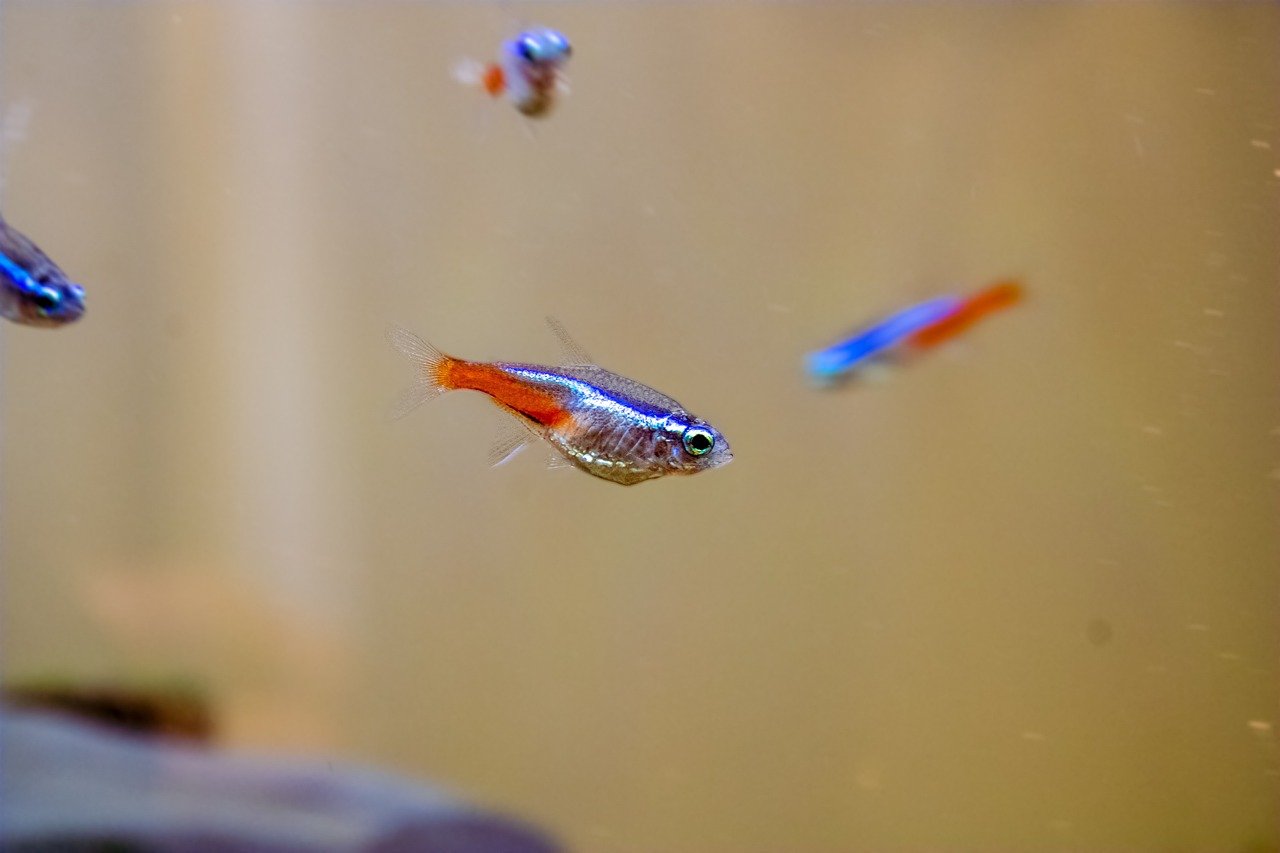
Neon Tetra Care And Feeding Guide And Tips
Neon tetra care and feeding guide and tips. When it comes to creating a thriving freshwater aquarium, few fish are as captivating and engaging as the neon tetra. These brightly colored species, originally native to South America, bring a splash of vibrancy to any community tank. While their diminutive size and silly mannerisms may endear them to hobbyists, it’s their unique characteristics that truly set them apart. Over time, I’ve come to appreciate their resilient nature, which allows them to thrive even in diverse water conditions. Despite their serene and peaceful temperament, these fish are surprisingly active and playful, making them a delight to observe.
Ensuring Neon Tetra care and feeding requires an understanding of their specific water parameters and environmental needs. These fish may seem low-maintenance, but they do need specialized care to remain in good health. Like all species, neon tetras thrive in environments that mimic their natural habitat as closely as possible, with the right balance of diet, clean water, and attention to potential diseases. I’ve found that keeping them in the right conditions enhances not only their company but also their lifespan.
Neon Tetra (Paracheirodon innesi)
Known scientifically as Paracheirodon innesi, these small, jewel-toned fish belong to the Characidae family, originating from the Amazon basin.as we are talking about Neon Tetra care and feeding guide and tips, we need to know that their scientific name is a nod to their ancestry, and they have been a staple of the aquarium trade for decades, largely due to their striking neon color and small size, which make them ideal for aquarists of all levels. With their oval body and short, pointed snout, neon tetras stand out against any backdrop, not just for their unique shape but also their shimmering iridescent blue-green scales. Measuring only around 4 cm in length, they display brilliant bands of green and red that seem to dance across their bodies like a reflection of light on water.
When setting up a tank for neon tetras, it’s essential to mimic their natural environments as much as possible. They can be rather shy, sometimes even timid or scared, especially in a bare tank without enough plants or hiding spots. During the journey of Neon Tetra care and feeding in my experience, a well-planted aquarium with dim, dark areas helps them feel secure. Groups of ten or more neon tetras will move gracefully together, showing their calm and tranquil nature when at ease, although they can sometimes show mild aggression toward other species or even their own kind, especially in a crowded or under-decorated tank.
Neon Tetra Care And Feeding Guide And Tips: Lifespan and Water Requirements
The lifespan of neon tetras can vary significantly depending on their living conditions. In the wild, they can live up to eight years, but in a well-maintained aquarium, their lifespan is typically 4-5 years, and with meticulous care, this can stretch to 6-7 years. One of the most critical aspects of neon tetra care and feeding guide is maintaining stable water parameters. They are quite durable as long as the water is kept within acceptable ranges, but sudden changes can be detrimental. For optimal health, I recommend a pH level between 4 and 7.5, combined with consistent filtration and biological filtration to ensure water cleanliness.
A key part of my routine is performing regular water changes—usually around 25% monthly, and 50% bi-monthly—to keep the tank free from toxins and maintain hygiene. Neon tetras are adaptable, tolerating both warm and cold water, but they prefer temperatures between 20 and 28 degrees Celsius. The water hardness should be between 5 and 15 dGH for them to truly thrive. Their need for oxygen means they do better in spacious tanks rather than small ones, where oxygen levels can drop rapidly.

Neon Tetra Care And Feeding Guide And Tips: Aquarium Setup and Plants
When we talk about Neon Tetra care and feeding guide and tips in terms of aquarium setup, neon tetras are great additions to a community aquarium and cohabitate well with other small fish such as danios and other tetras. I’ve always found it important to provide plenty of fast-growing plants to create a visually stimulating environment. Live plants are preferable, but if you opt for artificial plants, ensure they are sturdy and won’t break apart easily. The plants should be arranged with higher areas at the back and central areas, offering plenty of cover. Aim for a dark, low, and dimmed atmosphere using carefully placed lighting and fewer opaque decorations.
Diet and Feeding
The diet of a neon tetra is another area that requires attention. You need to know before Neon Tetra Care And Feeding that like many small fish, they are omnivorous, needing a balanced combination of foods to ensure they get all the necessary vitamins and minerals. Their staple diet should consist of flakes, freeze-dried bloodworms, shrimp pellets, and brine shrimp, but they also relish frozen foods like krill, daphnia, and worms. It’s fascinating to see them nibble on plant matter and even algae from the tank walls. For optimal health, I recommend adding algae wafers and vegetables to their diet occasionally.
As a general rule, stick to feeding your neon tetras twice daily and follow the 3-minute rule, which means only giving them what they can consume in three minutes. This keeps them from overeating, which can lead to obesity and strain on their immune system. Once they reach adulthood, reducing feedings to once daily is sufficient to keep them in peak condition.
Tank Mates and Compatibility
As schooling fish, neon tetras should be kept in groups of at least five to twenty individuals, depending on the size of your tank. They tend to thrive when surrounded by other peaceful species, such as zebrafish, gouramis, and small catfish. I’ve also had success pairing them with dwarf cichlids, although care should be taken with larger fish, as they might stress or bully the tetras. Keep in mind while Neon Tetra care and feeding guide, Fast-moving fish like goldfish, sunfish, or loaches should be avoided due to their aggressive nature.
Interestingly, neon tetras also do well with betta fish, despite the latter’s territorial behavior. However, the golden rule for tank mates is to ensure that the fish share similar water requirements and feeding habits. I also follow the general guideline of one gallon of water per neon tetra, as overcrowding can lead to stress and aggressive behavior.

Common Diseases
When discussing Neon tetra care and feeding guide and tips even though neon tetras are hardy, they can still fall prey to specific diseases, most notably Neon Tetra Disease, which is caused by the pleistophora hyphessobryconis parasite. This disease affects the fish’s liver, muscle, and spleen, leading to a slow deterioration if not treated early. Hexamita, a disease caused by a protozoan parasite, can also plague tetras, especially in younger fish. Symptoms include a loss of appetite, hemorrhaging around the head, red feces, and general lethargy. I always keep an eye out for early signs like cloudy eyes or a change in behavior, as quick intervention with medication can prevent severe outcomes.
Maintaining stable water parameters is essential in preventing diseases, as is slowly acclimating new fish to avoid pH shock. A varied diet also strengthens their resilience against illness, ensuring they receive all the nutrients needed to stay strong.
Breeding
Breeding neon tetras can be a rewarding but challenging experience. They reach sexual maturity at about two and a half months, and though breeding them in a community tank is possible, I’ve found better success in setting up a separate tank for the process. A 10-gallon tank with plenty of plants is ideal for spawning. Keeping the water at around 77F with a slight drop to 65-75F at night can encourage breeding. The males often display their best colors to attract females, building nests of mucus bubbles where the eggs are laid.
Once the eggs are fertilized, it’s crucial to separate the parents from the tank to prevent them from eating the eggs. After the fry hatch, they can be fed brine shrimp and infusoria until they’re large enough to join the adult tank.
Leave a Reply